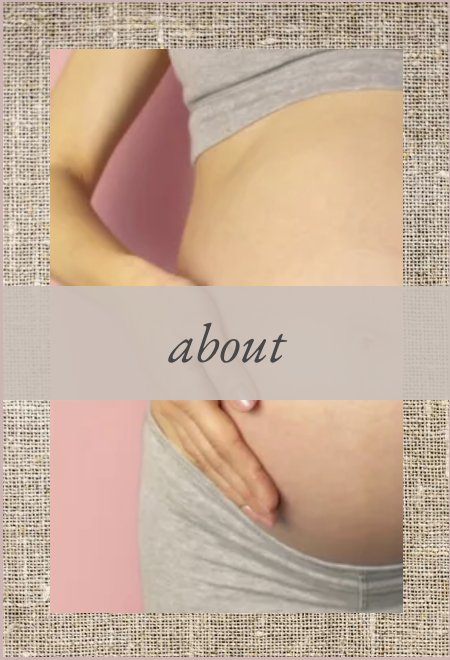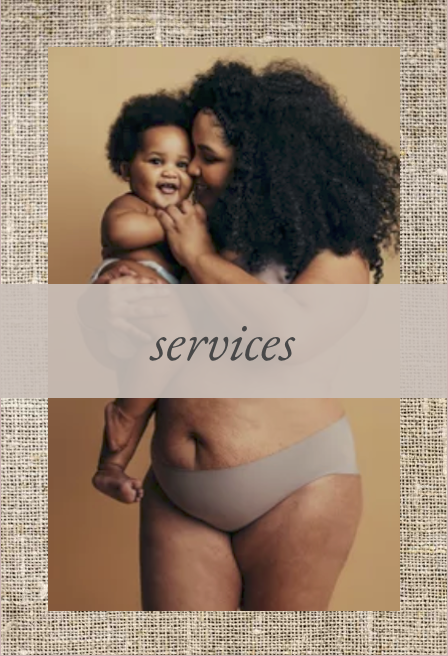Kim@BirthingDays.com | 541-733-4002
Clients are always asking for tips and tricks on how to make their labor more comfortable. Since every birth is unique we have compiled a list of comfort measures that can be helpful during an unmedicated birth, a birth with an epidural, and/or cesarean birth. Here are my go to ABCs of Comfort.
A- Air. This may sound obvious and maybe a bit ridiculous to even have on the list, but you’d be surprised at how many times we have to remind our clients to breathe. Many women hold their breath for long periods of time, especially when they are feeling the tension in their bodies. Don’t worry about learning a bunch of different breathing techniques. You will find that you will naturally fall into a pattern that works best for you. I would suggest breathing in through your nose and out through your mouth. This will maximize the oxygen levels in your bloodstream and help to lower blood pressure. Your muscles will relax and you will manage the intensity of labor so much more effectively!
B- Birth Ball. The birth ball (yoga ball) is one of the most used labor tools. You can sit on it, bounce on it, do hip circles, rest on it, lean over it… the options are ENDLESS. The birth ball is very comfortable to sit on and helps to take the pressure off the pelvic floor, but it can also encourage steady cervical dilation. The ball is also great for helping babies to maintain an optimal position as they get ready to make their grand appearance. (I love this Birth Ball.)
C- Cold. It is very common for laboring women to get hot and sweaty during labor. Using a cold washcloth on mom’s head or back of her neck can cool her off and help relieve acute pain. You can also use a cold gel pack if available.
D- Doula. Hiring a doula is one of the best investments you can make. A doula is your very own professionally trained birth assistant. Doulas provide expecting mothers, and/or partners with all the emotional, physical, and educational support during pregnancy, labor, birth, and the postpartum time period. AKA: Your new best friends. (Let’s Chat!)
E- Eat. Labor is hard work! It is important for you to keep up your strength. Listen to your body, but make sure you are eating small meals or snacks while you labor. If you plan on birthing at the hospital, be sure to pack a good variety of your favorite snacks. Some suggestions would be dried fruits and nuts, fresh fruit, smoothies, chopped veggies, and energy bars/balls. Partners – make sure you pack food for yourself too. You also need to keep your energy up!
F- Focal Point. Many women find that focusing on a certain object, picture in the room, or their partner’s face helps them focus during a contraction. This also helps them stay grounded and find that contractions are less intense.
G- Gravity. Researchers believe that giving birth in an upright position can benefit the mother and baby for several physiologic reasons. Physiologic refers to a healthy body’s normal function. In an upright position, gravity can help bring the baby down and out. Also, when someone is upright to give birth, there is less risk of compressing the mother’s aorta, which means there is a better oxygen supply to the baby. Upright positioning also helps the uterus contract more strongly and efficiently and helps the baby get in a better position to pass through the pelvis.
H- Heat. Applying heat with a warm cloth, or having a shower or warm bath are all great ways to reduce pain and tension in the body. Apply heat to mom’s neck and shoulders and lower back, or wherever she feels pain and tension in her body. Be sure not to place the gel back directly on the skin. Wrap it in a cloth or towel first and don’t place it on the belly as it could create too much heat for the baby.
I-Intuition. Your intuition is a powerful instinct that you should trust and listen to. Remember that no one knows your body or your baby better than you.
J- Jokes. Partners, it’s okay to make her laugh during labor. In fact, it’s a fantastic thing to do! Laughter also promotes oxytocin release and let’s face it – we always feel better when we can have a good laugh about things!
K- Kiss! Pucker up, partners. Kissing your laboring partner can increase oxytocin levels in the body. Oxytocin is less formally known as the love hormone. That hormone increases a feeling of love and security for the participating parties. Bonus, sometimes this helps move labor along.
L- Lunge. Standing and facing forward, place a chair or stool beside you. Place one foot on the chair/stool, with your knee and foot pointing to the side, while you remain facing forward. During a contraction, without leaning your upper body, slowly “lunge” sideways, toward the chair, so that you bend your raised knee. You should feel a stretch on the inside of one, or both thighs. Hold for a slow count of 5, then return to upright. Repeat during contractions for a total of 6 contractions. Try one contraction lunging to the left, and one to the right, and continue in the direction that feels most comfortable.
M-Massage. Many women enjoy a massage during their labor. We recommend a firm touch as opposed to a light, feathery one. As always, it is appropriate to ask permission before you touch a laboring mother. If she gives her consent, keep in mind that she may change her mind after you start massaging her and she may ask you to stop. Don’t take it personally. (These are great message tools.)
N-Naps. You shouldn’t feel like labor is a marathon that you have to endure! If your body is telling you to rest, then you need to listen to it! If you can get even a little bit of sleep (especially in the early stages of labor), then try to close your eyes and grab some sleep. You’ll want to conserve your energy for later on, which is when you’ll really need it.
O-Open. Try to adopt positions that open your body up and help to keep your pelvis loose and open. Slow dancing, or drawing a figure 8 with your hips is wonderful. Try a hands and knees (all fours) position and gently rock your pelvis with a simple pelvic tilt. Or lean over a birth ball and sway from side to side.
P-Partner. Partners, you play such an incredibly important role. Your continuous support, encouragement, love, and protection can make all the difference in the world to a laboring mom. What can you do? Attend a childbirth class with her. Learn about the process of birth, and learn relaxation techniques, such as breathing, massage, and counter-pressure. Write your birth preferences together so that you are on the same page. Don’t feel like you have to play the role of a “coach” though. Instead, see yourself as the ultimate protector of her space.
Q- Quiet. We know from a great deal of research that women (and in fact, ALL mammals) labor and give birth most effectively in quiet, dimly-lit conditions. Pretty much the opposite of modern hospital birth! It is thanks to the part of our brain called the neocortex that we can talk, count, be logical and rational (again – all the things ideally we want to switch off during labor). In fact, laboring women need to be protected against any sort of neocortical stimulation. Both rational language and bright lights both contribute to neocortical stimulation. The result of this is increased adrenaline in our bodies, which as we know, causes our muscles to harden, and oxytocin release to be slowed which ultimately results in a slowed, or even stalled labor.
R-Relaxation. Much of what causes a woman’s body to tense during labor is fear. Fear of the unknown, fear of the pain, fear of losing control… There are many ways that you can relax your mind and body in labor. Focus on deep breathing, focus on your baby (women often forget about the fact that there is a baby in there!), and focus on releasing the tension in your muscles. Practice guided meditation or relaxation. Partners – watch for the tell-tale signs of tension and fear in her body. A tight jaw and facial muscles, hunched shoulders, erratic breathing, and negative self-talk (“I can’t do this”). Help her to regain focus, give her a comforting massage, and breathe with her.
S- Sway. Turn up that music and dance that baby out! Dancing is fantastic as it’s fun, keeps you upright (gravity is your friend, remember!), and keeps your pelvis loose and open. If you slow dance with your partner, you have the added benefit of Oxytocin flowing through your body which keeps those contractions flowing efficiently!
T- Tub. Many midwives jokingly call getting into a tub of water during labor an “aqua-dural” because many women find it so relaxing. If you and your baby are doing fine, you may use the tub any time that you want and for as long as you want. Water will provide the most comfort and benefit if it completely covers your body and stomach up to your
breasts
U- Urinate. As odd as it might sound, many women forget to go to the toilet frequently in labor! It’s important to drink a lot of fluids throughout labor, and therefore it is important to empty your bladder frequently (partners – you can remind her!). A full bladder is not only uncomfortable, but that pressure can increase your perception of pain AND prevent your baby from descending as quickly as he or she would otherwise.
V-Visualization. Visualizations can be very powerful in labor. Try to imagine your body is opening up to bring new life. Some women like to imagine their bodies are like a flower that is opening up. Others like to use the actual word, “open” and repeat it aloud to themselves – or to write the word on a piece of paper and attach it to the wall to use as a focal point during contractions.
W- Water. Stay hydrated. Drinking water helps you feel good while your body is working hard on helping the baby out. Water is also an incredibly powerful comfort tool in labor. Whether you have access to a shower or a bath/birth pool, you should definitely take advantage of the wonderful relaxing and calming properties of water.
X- eXhale. Try to have an awareness of your breath during labor. When you exhale, consciously breathe out the tension in your body. Vocalize if your body tells you it needs to. Remember to try and breathe in through your nose, and out through your mouth. Start and end each contraction with a cleansing breath, which is a wonderful way to help you mentally prepare for a contraction, but equally important – to move on from one (especially if it felt more challenging to get through than others). Remember that each contraction is bringing you closer to meeting that precious baby of yours!
Y- YELL. Yelling, swearing, roaring – all of these are wonderful ways to release tension from our bodies. In fact, by holding it in, because you feel self-conscious or worried about “what people will think” is only going to add to the tension and pain in your body.
Z-Zzzzz’s. Labor often begins in the middle of the night. This is mainly because our bodies are relaxed and free of tension. If you wake up and think that your labor might have started, but the contractions are still mild and widely spaced apart, then the best thing you could possibly do is try to get a few more hours of sleep. Conserve your energy for later when you’ll need it most! (I love this eye mask!)
Interested in learning more about comfort measures in one of our childbirth classes or hiring a doula?? Schedule a FREE consultation here.




